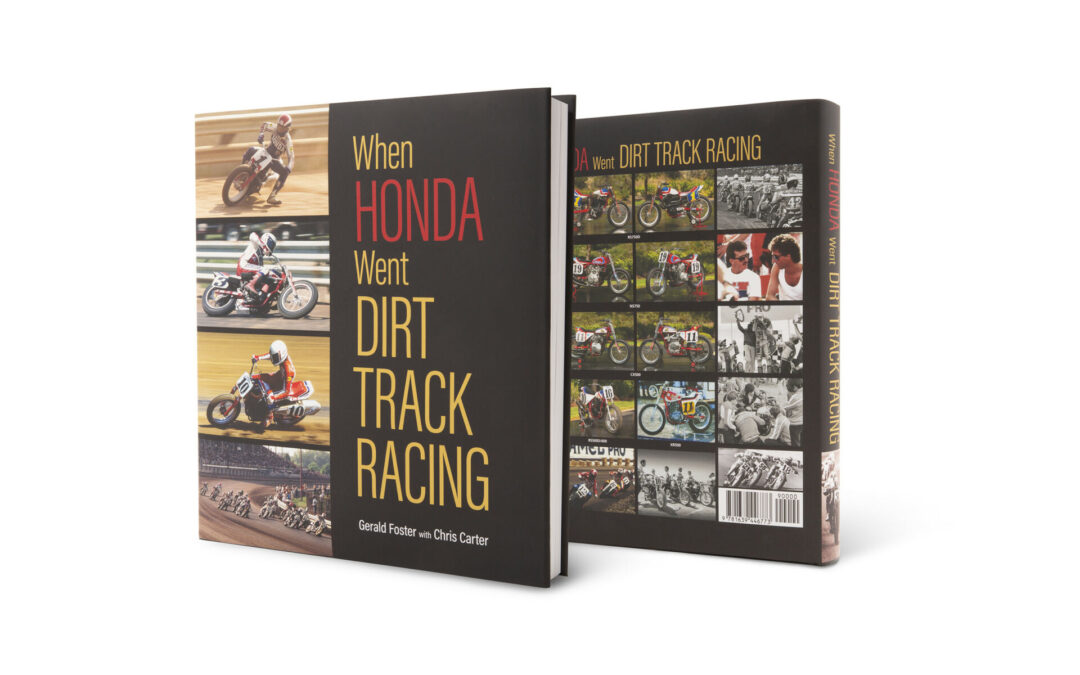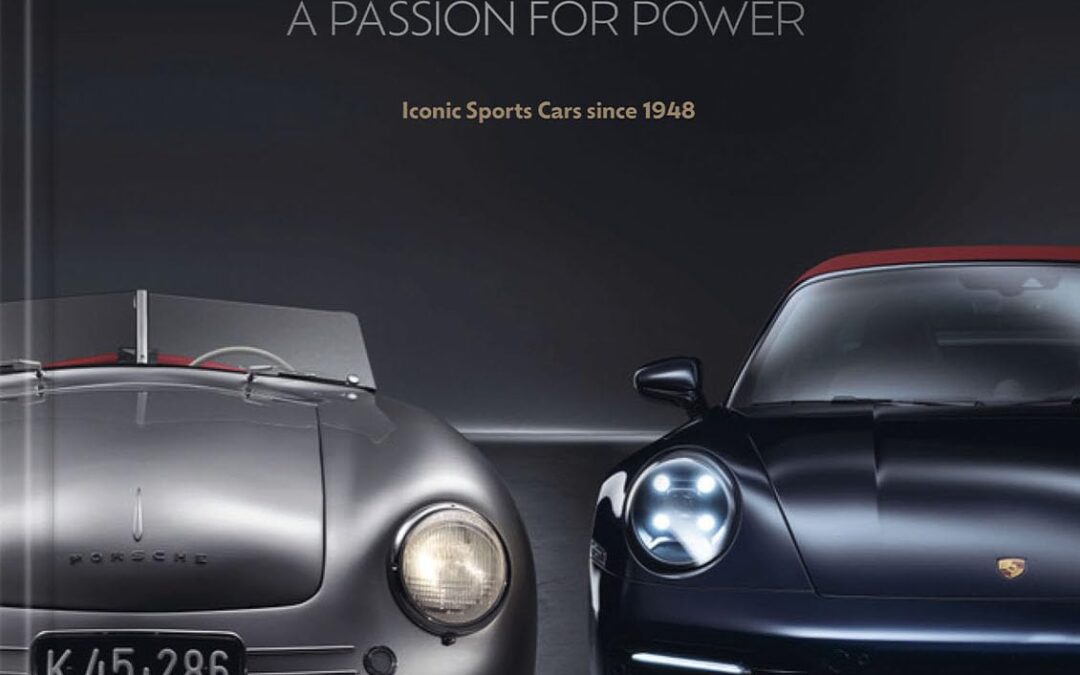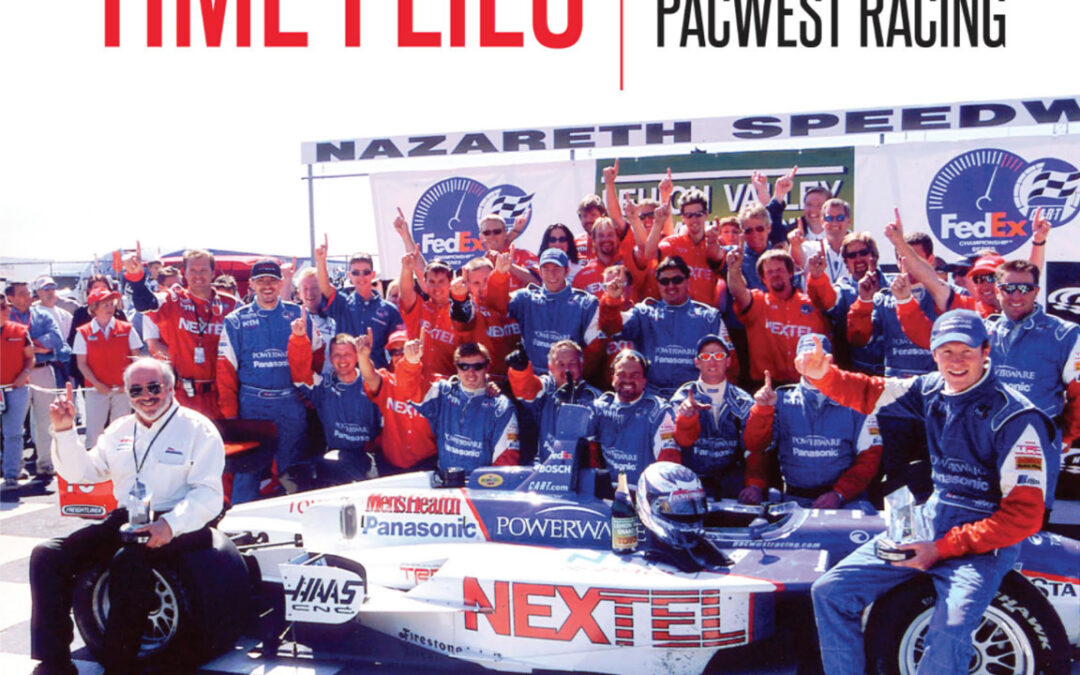
Welding is an art and skill that’s essential for automotive fabrication, repair, and vehicle upgrades. It is also an important skill for countless household projects and industries. Some books show basic welding techniques with steel and cast iron. But this isn’t your run-of-the-mill introductory welding book.
In this revised edition of the previous title, Advanced Automotive Welding, Jerry Uttrachi, past president of the American Welding Society, shows you how to perform basic welding procedures with steel and cast iron. He also reveals advanced welding techniques and the use of aluminum, titanium, magnesium, stainless steel, and other specialty materials. Projects and techniques focus on automotive applications but they can also be used for welding a bicycle frame, a steel grill, and other everyday fixes.
TIG, oxyacetylene, arc, and wire-feed welding processes are detailed, with special coverage on stick and MIG processes. Welding butt and V-joints is explained as well as welding more complex joints, including J- and U-joints. Step-by-step instruction gives you the necessary information to tackle and complete almost any welding job. Popular automotive projects, such as welding an electric fuel pump into an aluminum tank, repairing chrome-moly suspension arms, and welding in floorpans are thoroughly covered. And when it comes to repairing household items, specific projects such as repairing and modifying the steel tubing on an exercise machine, repairing the frame for a decorative bench, and more are covered.
Whether you’re new to welding, a veteran weldor working with special materials, or involved in a special project, you will find indispensible information within the pages of this book.
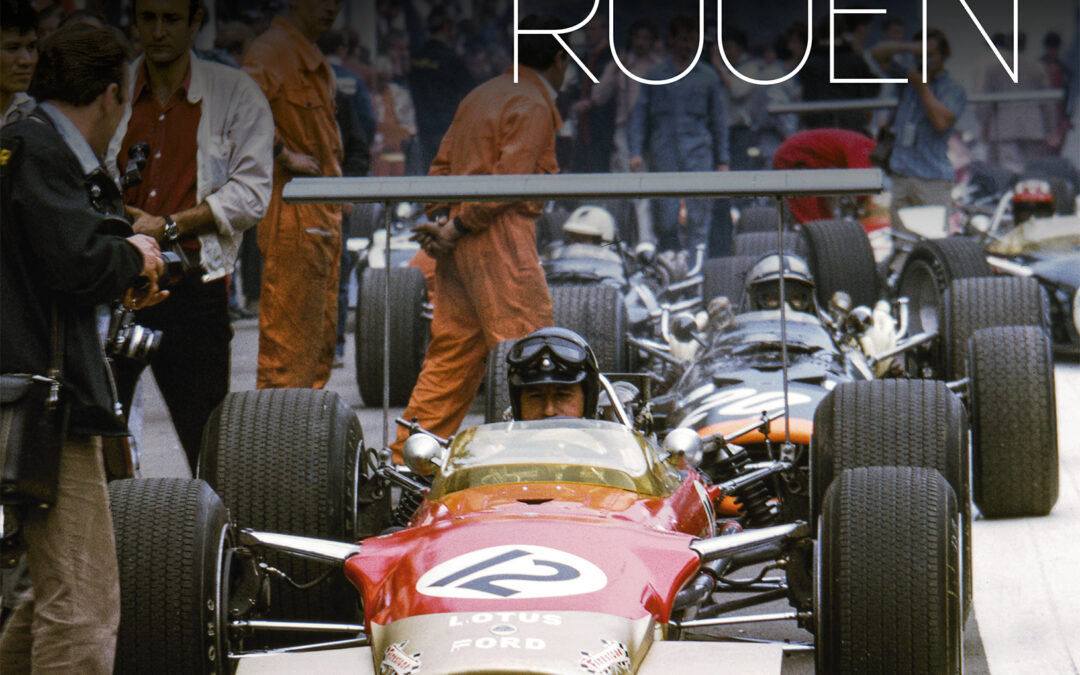
The story of a race – A race in history
This book is part of a new collection of books that unveils « freeze-frames » from the great movie of motor racing history. Its purpose is to explore a particular weekend, the choice of which depends above all on the authors’ ability to gather the most original and complete documentation possible: photos, plans, programs, drawings, period reports and testimonies.
All the historical disciplines are likely to be approached: F1, F2, F3, FJ, FF, sport-prototypes, GT, touring, cups of mark, rally, etc. If the program includes other events of a different nature (motorcycling, cycling…), they are reported with the same concern for precision.
The considerable preparatory work required to produce such works means that each author has had to rely on other contributors to benefit from the pooling of personal networks and rare documentary resources. It is thanks to their remarkable collaborative spirit that this project was possible.
July 1968 – The French Grand Prix succeeds the ACF Grand Prix on the famous circuit of Rouen-Les Essarts. The program is ambitious with the races of R8 Gordini, Formula France, F3 and F1. Unpublished documents, testimonies, never released photos shed a new light on this race weekend mixed with joy and tears. Hear the roar of the V12s and the blaze of the V8s, meet Rindt, Stewart, Hill, Brabham, Ickx, Rodriguez, Beltoise or Schlesser and let yourself be carried away by the story of this Grand Prix.
Text in English and French
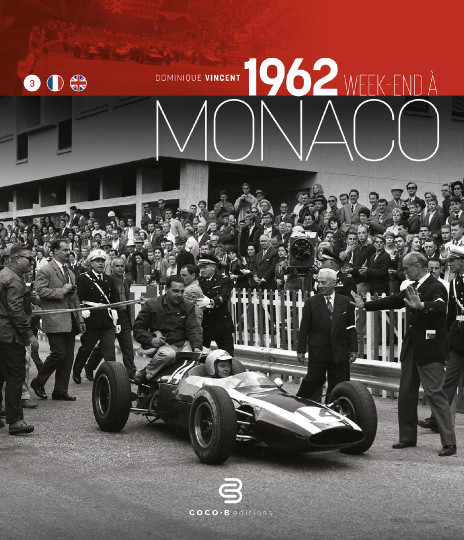
The story of a race – A race in history
This book is part of a new collection of books that unveils « freeze-frames » from the great movie of motor racing history. Its purpose is to explore a particular weekend, the choice of which depends above all on the authors’ ability to gather the most original and complete documentation possible: photos, plans, programs, drawings, period reports and testimonies.
All the historical disciplines are likely to be approached: F1, F2, F3, FJ, FF, sport-prototypes, GT, touring, cups of mark, rally, etc. If the program includes other events of a different nature (motorcycling, cycling…), they are reported with the same concern for precision.
The considerable preparatory work required to produce such works means that each author has had to rely on other contributors to benefit from the pooling of personal networks and rare documentary resources. It is thanks to their remarkable collaborative spirit that this project was possible.
An exceptional iconography at the service of the most prestigious F1 Grand Prix of the season, three Formula Junior races finally revealed thanks to unpublished documents, the presence of Clark, Brabham, Gurney, McLaren, G. Hill, P. Hill, Surtees, Bandini, Siffert and Trintignant at the wheel of the mythical Ferraris, Coopers, Lotuses, Porsches, BRMs and Lolas; the participation of the iconic Lotus 25 with monocoque chassis; these are just some of the ingredients of the spicy menu that we are proposing you to enjoy.
Text in English and French
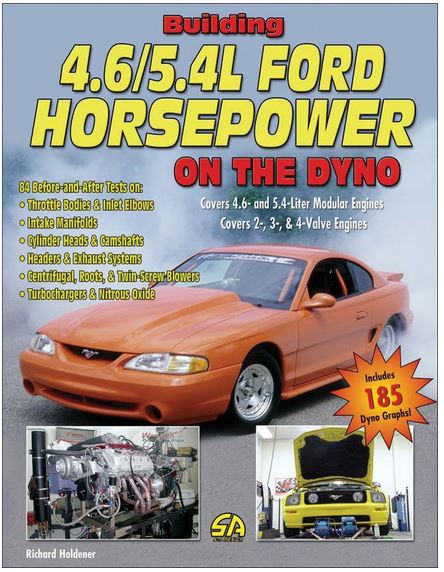
The 4.6- and 5.4-liter modular Ford engines are finally catching up with the legendary 5.0L in terms of aftermarket support and performance parts availability. Having a lot of parts to choose from is great for the enthusiast, but it can also make it harder to figure out what parts and modifications will work best. Building 4.6/5.4L Ford Horsepower on the Dyno takes the guesswork out of modification and parts selection by showing you the types of horsepower and torque gains expected by each modification.
Author Richard Holdener uses over 340 photos and 185 back-to-back dyno graphs to show you which parts increase horsepower and torque, and which parts don’t deliver on their promises. Unlike sources that only give you peak numbers and gains, Building 4.6/5.4L Ford Horsepower on the Dyno includes complete before-and-after dyno graphs, so you can see where in the RPM range these parts make (or lose) the most horsepower and torque. Holdener covers upgrades for 2-, 3-, and 4-valve modular engines, with chapters on throttle bodies and inlet elbows, intake manifolds, cylinder heads, camshafts, nitrous oxide, supercharging, turbocharging, headers, exhaust systems, and complete engine buildups.

To the untrained eye, Los Angeles may seem like a spectacle of glitz and glamour, freeways and traffic snarls. But beneath those superficial impressions hides a richly complex and diverse city teeming with quirky art, dazzling buildings, hidden histories, strange spectacles, and inspiring cultural landmarks. Secret Los Angeles guides you to the hidden gems that make the city and surrounding county truly sparkle. Discover the story behind the featherbrained Statue of Liberty of L.A. and the butterflies of an abandoned oceanside neighborhood. Stroll along the other walks of fame and drive along a musical road. Explore a historic movie palace hidden in the Jewelry District and find the inspiration for Disneyland nestled within Griffith Park. Find the secretive locations of Prohibition-era speakeasies and sip top-notch booze at a Willy Wonka-like distillery. Experience a reenactment of the Great Los Angeles Air Raid and uncover the history of Central Avenue’s jazz legacy. Local author Danny Jensen directs you to under-the-radar destinations that are often overlooked, even by locals, yet offer fascinating insight into a place that captures so many people s imagination. Whether you ve recently arrived or lived here all your life, this book will help you see and understand L.A. in a completely new way and inspire you to explore further.

AVAILABLE FEBRUARY 2024
• The successor to the bestselling Carchitecture (6,000 copies sold)
• America’s most iconic architecture meets dazzling supercars and classics
• Top-notch photography, sleekly designed
“Design writers Thijs Demeulemeester and Bert Voet’s book Carchitecture explores the historical parallels between trends in architectural styles and car design.” – Financial Times A book like a road trip along iconic American homes and the unique cars that perfectly match them. Carchitecture goes America. Through four chapters – Iconic Houses, Cars & Stars, Californication and American Cars – and five essays, the reader discovers the wonderful interplay of architecture and car design. Eye candy for architecture and car lovers alike.
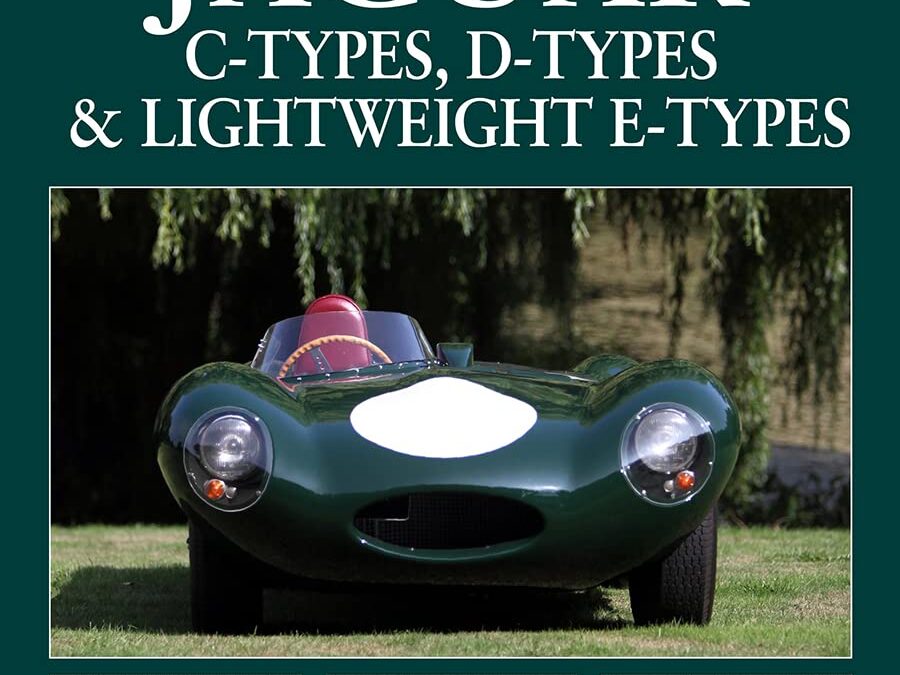
Expanded new edition
The first edition of the present book was published in 2014 and was quickly acclaimed as the bible of the classic Jaguar racers. This greatly expanded new edition runs to more than 400 pages and contains 500 illustrations. It brings the individual stories of over 150 cars up to date, and includes additional useful information and appendices. Today the name of Jaguar still ranks high in the pantheon of British cars that have won the Le Mans 24-hour race. A mere 20 years since the birth of their first car, Jaguar had become the leading high-performance car in Britain thanks to the revolutionary XK engine, and the XK120 was in its day the fastest production car in the world. While the company had begun to earn its spurs in motor racing, it was a bold step to build a new car with the specific intention of entering Le Mans, at the time the most famous motor race in the world. Remarkably, the new Jaguar C-type succeeded in winning at Le Mans on the first attempt. A further four Le Mans victories followed: in 1953 for the C-type again, and then three wins for D-types from 1955 to 1957, by which time the Jaguar works team had been withdrawn from racing. Private entries of Jaguar C- and D-types in other races continued for many years. The E-type was never as successful in racing, since it was conceived as a GT road car rather than a racer, but the small run of lightweight cars and other competition versions added further lustre to Jaguar’s reputation. C- and D-types were sold in some numbers to private owners on both sides of the Atlantic, many of whom obviously used them for racing, but unlike most later sports-racing cars they could still be used on the road. This was and remains one of their many attractions. Virtually all the cars have survived, and in recent times have seen a steady increase in value. This updated, enlarged and comprehensive new edition of the Register is a tribute to these glorious cars, to the people who were involved in their design and production, and to the drivers who campaigned them.
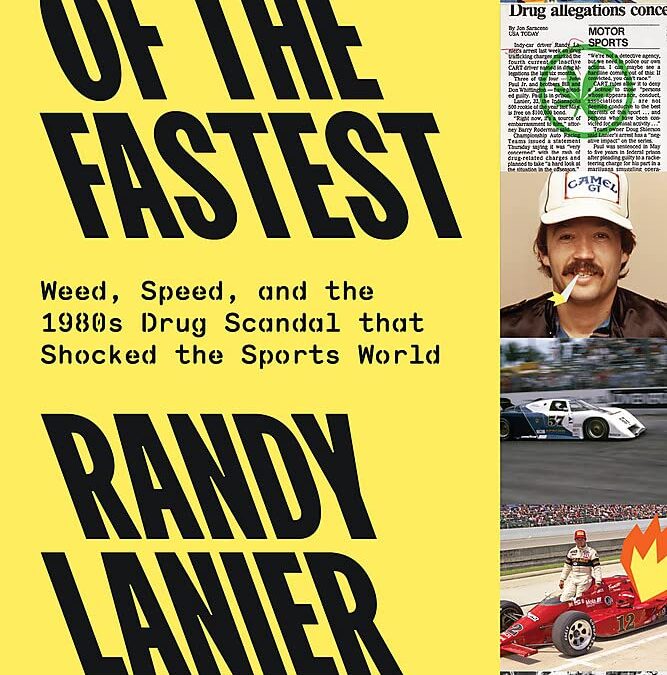
The high-octane, Seabiscuit-meets-Scarface story of how Randy Lanier became a 1980s international sports star, soaring through the ranks of car racing while holding a dark secret: he was also one of the biggest pot smugglers in American history
As a kid, Randy Lanier dreamed of achieving four-wheel glory at the Indianapolis 500, but knew he’d never be able to afford the most expensive sport on earth. That all changed when he bought a speedboat and began smuggling pot from the Bahamas. Fueled by what would become a historically massive smuggling operation, he started racing cars and became an overnight sensation. For Randy and his teammates, money was no object, and bigger hauls meant faster cars. At every event they attended, they were behind the wheel of the best machinery, flaunting their secret in front of huge crowds and live television cameras. But no matter how fast they drove, they couldn’t outrun the law. As Randy came ever closer to reaching his dream of high-speed glory, one of the biggest drug scandals ever to hit the professional sports world was about to unfold.
Set in the 1980s Florida of Miami Vice, this is the unbelievable, unforgettable, unparalleled story of an ordinary guy whose attempts to become famous doing the thing he wanted most—become a world class race car driver—devolved into a you-can’t-make-this-up tale of one of the biggest crime rings and drug scandals of the 1980s. Now, with the help of New York Times bestselling author A.J. Baime, Randy tells the whole truth for the first time ever, a gripping narrative unlike any other, a sports story for the ages, and shocking a true crime epic.
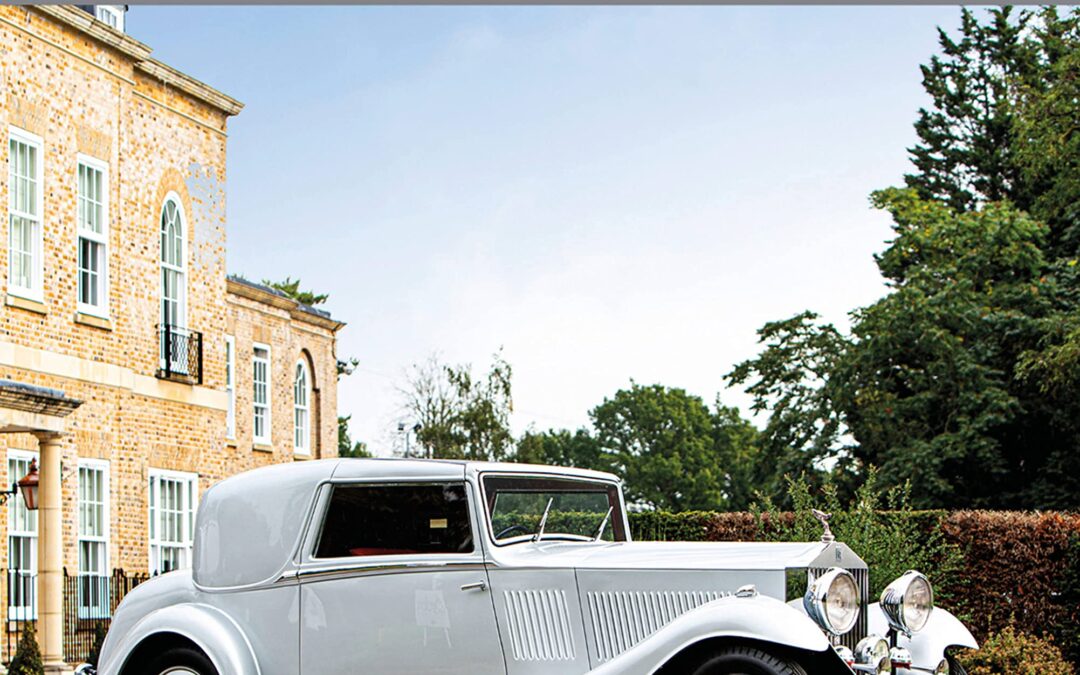
When Rolls-Royce introduced its new junior model, the Twenty, in 1922, there was no question of the company supplying coachwork for it. That was the job of the myriad specialist coachbuilding firms, large and small, both in Britain and overseas. Customers went to a coachbuilder of their choice, asked for what they wanted, and got it. It was a system that remained unchanged in principle throughout the period, as the Twenty gave way to the 20/25, that model in turn was succeeded by the 25/30, and the Wraith became the final junior Rolls-Royce before the Second World War brought a great and glamorous era to an end.
From the relatively well-known Abbott of Farnham, to the little-known Wyllie & Lochhead in Glasgow, British coachbuilders across the country stepped up to the plate and delivered their best on these chassis. Among them, great names such as Barker, Gurney Nutting, HJ Mulliner and Park Ward led the field with some outstanding designs, many of them produced in small quantities (but always with individual touches). Outside the British Isles, but in far smaller numbers, there were bodies from the likes of Kellner and Saoutchik in France, Erdmann & Rossi in Germany, Gangloff in Switzerland, and Brewster in the USA.
The work of all these coachbuilders and many more is covered in this book, which for ease of understanding divides up each coachbuilder’s creations according to the host chassis and the different styles – saloon, limousine, drophead coupé, and so on. Rolls-Royce owners will particularly appreciate the inclusion of chassis numbers for all the cars bodied by each coachbuilder, a feature which makes this book a valuable reference work as well as a visual treat.
With well over 250 photographs, many in colour by distinguished photographer Simon Clay, this book celebrates the style and flair of a bygone era, and provides a vital fund of information for the many enthusiasts and owners who care about these fine cars today.
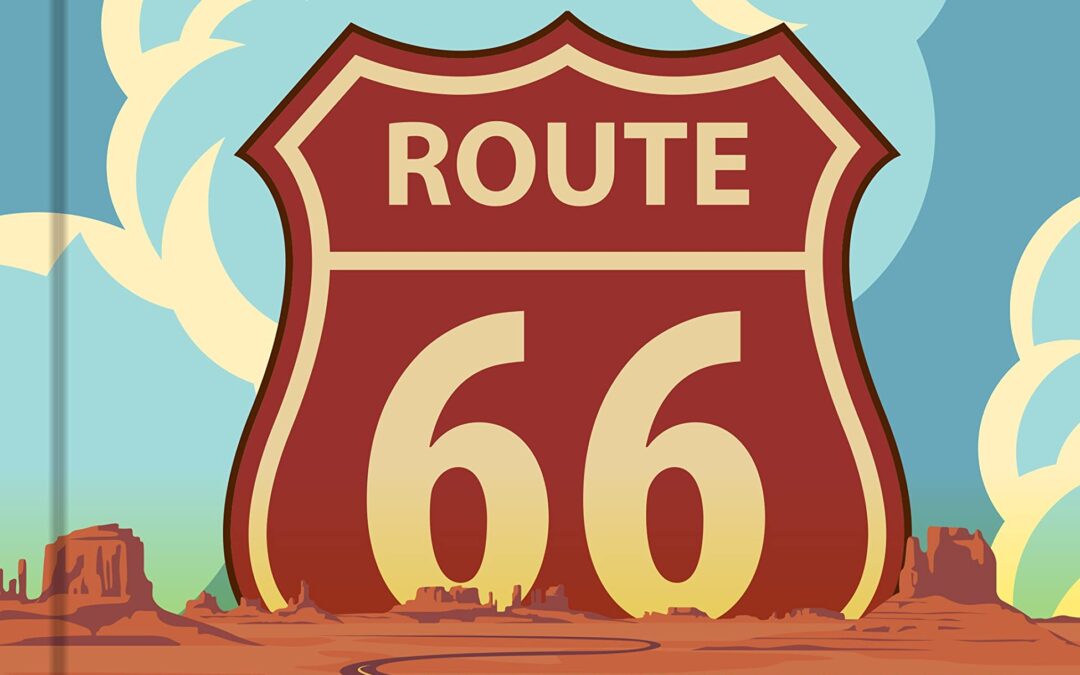
Here We Are . . . on Route 66 explores and celebrates iconic landmarks and cultural touchstones associated with America’s most famous highway—and guides you to some lesser-known gems just off the beaten path.
Spanning nearly 2,500 miles and eight states—Illinois, Missouri, Kansas, Oklahoma, Texas, New Mexico, Arizona, and California—America’s Main Street has given rise to a colorful assortment of roadhouses, motels, greasy spoons, roadside amusements, and breathtaking natural scenery. Acclaimed Route 66 historian Jim Hinckley is your guide to a carefully curated selection of these sites, ranging from the iconic to the revelatory.
Arranged by classic Route 66 topics, each spread gives you a different 66 site or attraction, along with a concise and authoritative history illustrated with colorful photography, evocative historical imagery, and collectibles like postcards, ads, and more. Topics of organization include:
- Towns and Cities
- Natural Wonders
- Roadside Attractions
- Eateries
- Motels and Hotels
- Music, Film, and TV
Hinckley is perhaps the most internationally recognized authority on the subject of America’s Main Street. This collection offers you the stories behind Route 66 icons such as Baxter Springs and Tucumcari, Meramec Caverns, Arroyo Seco Byway, Berghoff’s and the Oatman Hotel, Munger Moss and Wigwam Motel—and dozens more. Hinckley also treats you to a fresh look at lesser known but deserving attractions too.
At nearly a century old, Route 66 remains the embodiment of the classic American highway. Written by an acknowledged authority on the subject, wonderfully illustrated, and presented in a manner that allows you to dip in and out, Here We Are . . . on Route 66 is a must-have for your Route 66 bookshelf.
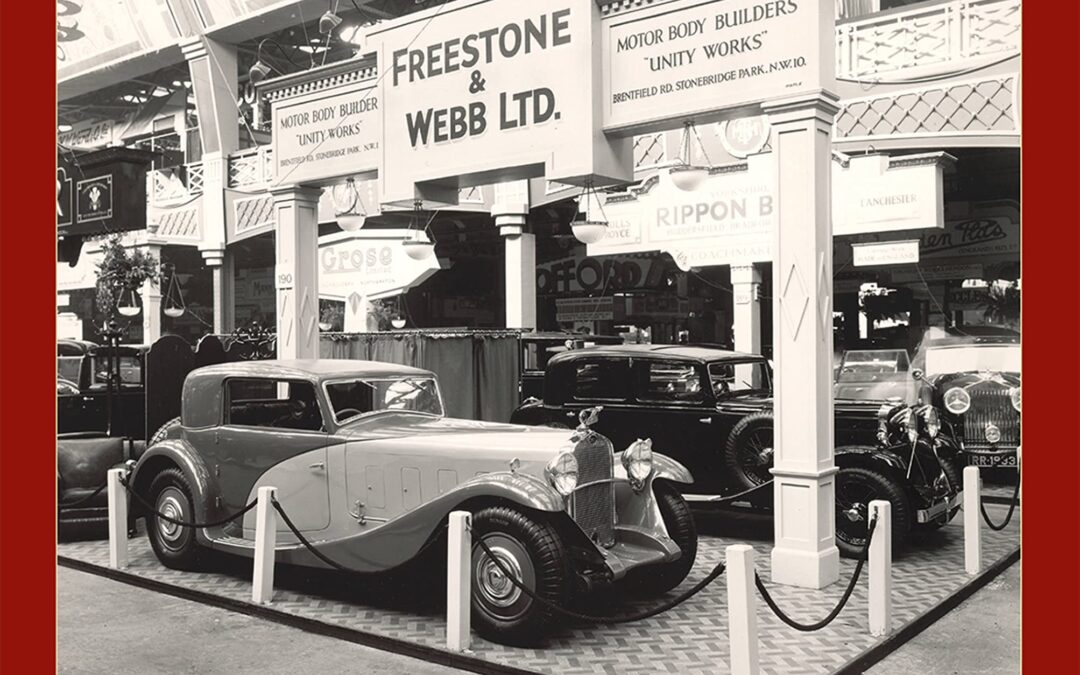
Freestone & Webb was a great name in British coachbuilding for some 35 years, but as demand for coachbuilt car bodies dried up in the 1950s, the company became the first of the Big Five remaining specialists to close down.
They had started in the early 1920s, as the motoring scene was settling down after the upheaval of the First World War. Early devotees of lightweight Weymann construction, they soon earned the approval of the nearby Bentley company because their bodies did not unduly hinder the performance of these great sporting chassis. Before long, Rolls-Royce models were also being provided with stylish and well-made Freestone & Webb coachwork, and so were many leading foreign chassis, such as Mercedes-Benz and Packard.
Although the partnership of Messrs Freestone and Webb was dissolved before the 1930s had got under way, the company survived the bleak years at the start of the decade and continued to build both arrestingly beautiful bespoke bodies and distinctive coachwork in small-volume batches. Most notable in this period was their razor-edge style, which was rapidly copied by many other coachbuilders and would remain influential into the early 1950s.
Like others, the company struggled to get back into the game after an enforced layoff during the Second World War. But with the aid of good designs and fine workmanship, they survived into the 1950s with their reputation intact. Sadly, their continued survival could only be a matter of time, and Arthur Webb was already looking to sell the company when he died in 1954. Freestone & Webb continued gamely for four more years, experimenting with new designs and going out in a blaze of glory with their extravagant Honeymoon Express for a Rolls-Royce Silver Cloud.
This is the story of a great British coachbuilder, told with the aid of meticulous research and with great affection for the grandeur and style that its products still represent.
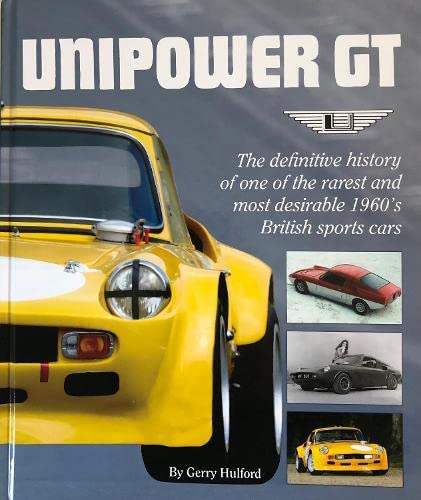
This fully authenticated publication written by Gerry Hulford, is a 500 copy Limited publication. Launched in 1966 to an admiring press and public alike, the Unipower GT took the specialist car market at the time by storm. Considered by the cognoscenti as the best of the limited production sports cars of the 60’s, the car appealed to both wealthy and enthusiast alike. In its later years the cars would embark on a chequered but never to be forgotten campaign of international sports car racing across Europe, almost qualifying for the 1969 Le Mans 24 hrs. Production ceased in late 1969 after just 73 examples had been built, but with still at least 70% production existing, they remain much sought after by collectors the world over. Gerry Hulford has assembled here an historical record of the marque in 172 pages, from its early production and beyond, with an amazing collection of over 420 photographs many of which have never been seen before, illustrating the extraordinary history of these unique cars. The story and photographs take you on an intriguing journey from its inception, development and production, before following owner’s cars across the world, many of whom have lovingly cared for some immaculate examples, as well as those who have devoted considerable effort to the restoration of their cars. The racing history from early 1967 through to today, is covered in detail and chronicles the many on-track endeavours against all odds. Detail on the cars also includes, technical information on suspension setup and a guide to what to look for when buying a Unipower GT. This is the most comprehensive and fully authenticated, by both its Founder and designer, record of the Unipower GT in all its versions and has enough historical information to satisfy the most demanding specialist car owner and enthusiast alike, the supports why it is still revered as the ‘Mini-Miura” of the 60s.
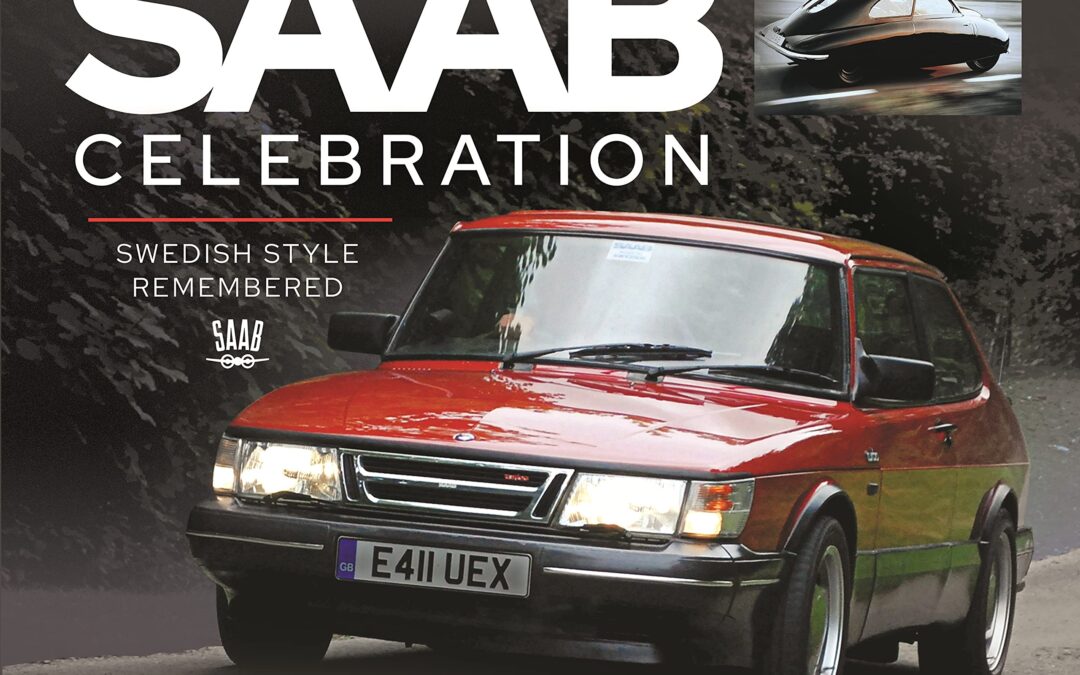
Saab has gone, but its cars and its loyal band of owners remain. In this photographic album, internationally known Saab author and commentator Lance Cole celebrates all things Saab.
In a collection of over 200 photographic images accompanied by a detailed yet engaging commentary, the book delivers a record of Saab from its first car to its last. The engineering, design, and ethos of Saab’s cars across the generations are captured in all their glory.
The author of many Saab articles and several Saab books, this is Lance Cole’s new view on Sweden’s other car maker – one that really did build cars to a different standard.
Saab Celebration is designed to be a memorial companion for the Saab fan. If you like Saabs, then enjoy this tribute to all things Saab.
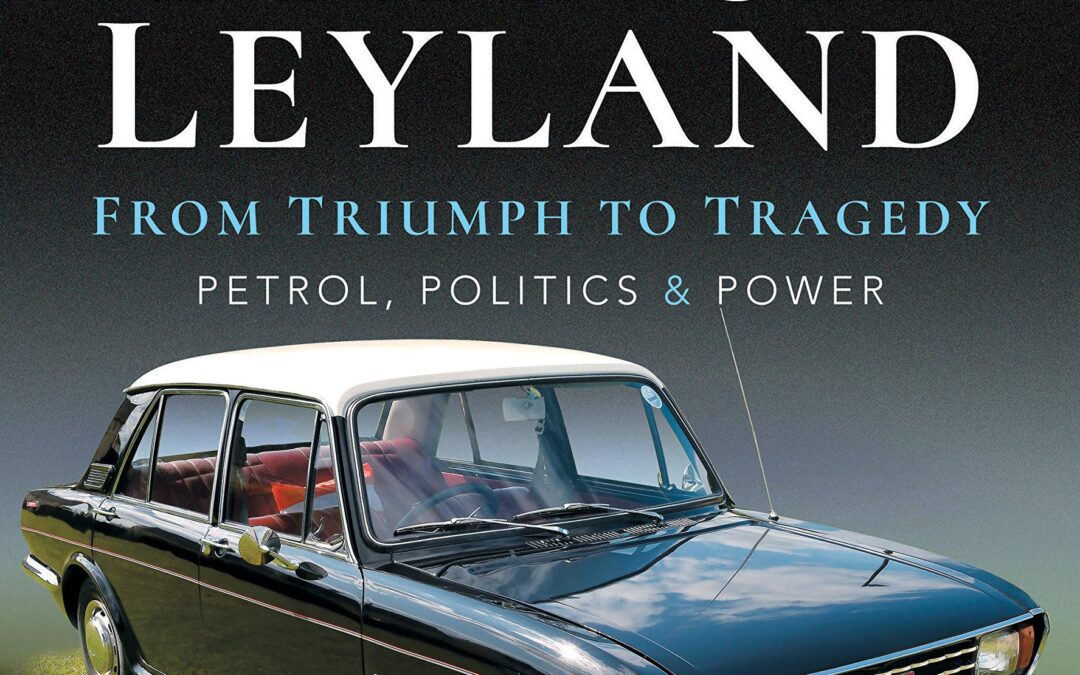
What really happened at British Leyland (BL)? Was it ‘just’ the cars, or were other factors vital to the story? Who really was to blame for BL and MG Rover’s death?
The ‘truth’ about BL is deeper than its cars – were ultra- Left-wing plots to topple BL and British society real? Did secret deals and political intrigue really exist? Was it Labour or Conservative powers who ‘killed’ BL, or was it BL itself? How was it that BL’s design genius was hobbled?
Author Lance Cole lifts the bonnet on BL and presents a forensic yet easy to read new analysis in a story of BL, its cars, and the era of their motoring as powers on the political Left and Right waged war, sometimes even with themselves.
Here is a book about cars and more, a conversation on all things BL: this is a new account of a classic British story told across a trail of evidence in a British industrial and political drama.
Many mistakes made BL, but some of the cars were superb, the designs of genius, the engineering excellent; it is just that we have either forgotten, or been brainwashed into believing the worst.
In a BL book like no other, written by a classic car fanatic with a background in industrial design, automotive, and wider journalism, this story lifts the lid on BL’s cars and more. The author also adds inside knowledge from time working in the motor industry.
Lance Cole tells the deeper BL story across the era of its greatest successes and its biggest failures.
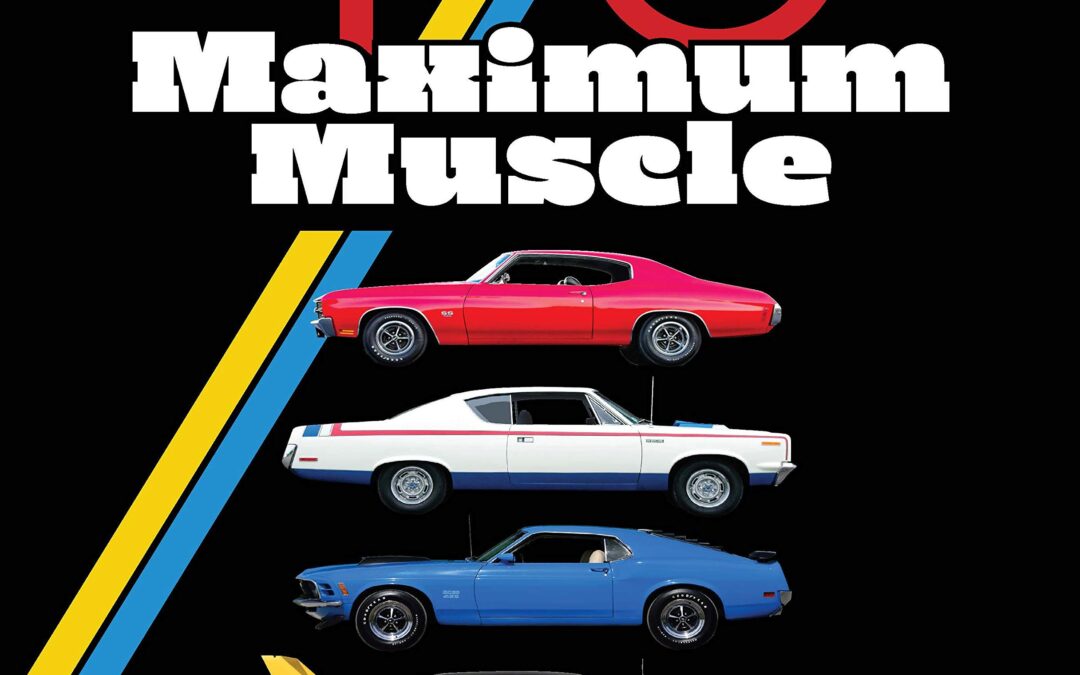
In 1970, the American muscle car was as fast and outrageous as it would ever get. But the end was nigh, and 1970 Maximum Muscle dives head-first into the storm before the calm.
Wherever you mark the beginning of the muscle car era—Oldsmobile’s 1949 Rocket 88, Chrysler’s 1951 FirePower engines, the 1964 Pontiac GTO—one thing is certain: in 1970, the era that had witnessed a parade of gloriously powerful, stylish, and brawny cars apt to make the hearts of even the most dispassionate squares go pitter-patter was sucking fumes. Gasoline shortages, skyrocketing fuel prices, insurance-industry bean counters, rising ecological concerns, and new, more fuel-efficient imports all conspired to consign the American muscle car to an ugly and unseemly denouement. Yet 1970 saw the actual zenith of the cars themselves, the year manufacturers pulled out all the stops and produced the most powerful and stunning machines the automotive world had ever seen.
1970 Maximum Muscle not only explores the factors that led to the decline of the most exciting era in the American automotive industry, it details some of the new models and model options that arguably made 1970 the climax of the muscle car era from engineering, styling, and cultural standpoints. As the war among GM, Ford, Chrysler, and AMC played out at dealerships, dragstrips, and drive-ins, ready-and-willing gearheads drove off dealer lots in potent behemoths like the Buick GSX, Oldsmobile 4-4-2, and Ford Torino Cobra. Muscle car stalwarts like the SS Chevelle, Pontiac GTO, and Plymouth ’Cuda became available with optional LS-6, Stage 1, and Hemi engines, respectively. Manufacturers ratcheted up the advertising hyperbole at the same time, offering performance packages with names like “Six-Pack,” “Ram Air,” and “Cobra Jet,” while spoilers, scoops, hood tachometers, and decal packages were de rigueur. Meanwhile, on the popular SCCA Trans Am circuit, top drivers campaigned more nimble muscle off-the-rack cars like the Camaro Z/28 and Boss 302 Mustang.
1970 Maximum Muscle is an entertaining and rollicking look at the muscle car’s peak year!
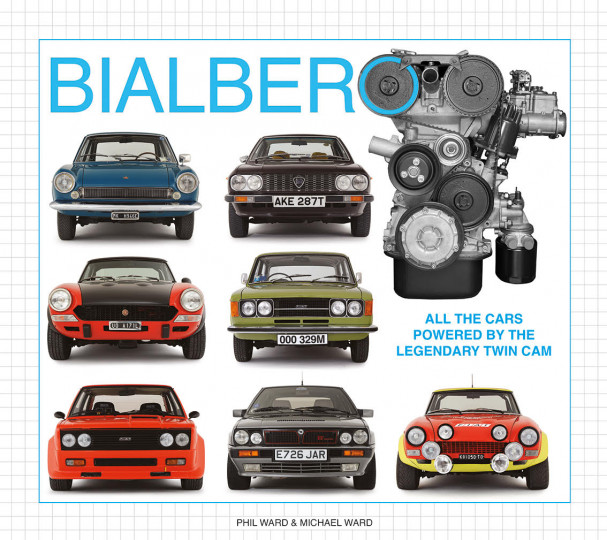
A new 304 page fully illustrated colour book with over 900 photographs, many never before published, based on all the Fiats, Lancias and Alfa Romeos that are powered by Aurelio Lampredi’s superb twin cam engine.
While some elements of the book are an expansion of the earlier works by the same author, the early chapters now include extracts from road tests by Auto Italia’s writers.
Also included in the first part of the book are one-offs and concepts like the Stola Dedica, Lancia Magia and Grama 2
‘Puntograle’, while modified cars include a 180bhp twin cam-engined Lada ‘124’ and a superb Abarth OT1600 tribute.
The second half of the book is dedicated to hands-on maintenance and restoration advice of a selection of popular classic twin cams. There is also the added bonus of invaluable, expert tuning information by the renowned and sadly recently deceased twin cam race engine preparer, Guy Croft.
This much anticipated publication is prolifically illustrated throughout with high quality photography of real world cars from collections and dynamic images from Auto Italia’s archives.
Many of the featured cars are owned by the magazine’s readers, in addition there is also a gallery of restored twin cams from around the world.

Lifestyle journalist Thijs Demeulemeester takes you on a trip through some iconic houses and the unique cars that match them in elegance of design and construction.
“Life is too short to drive boring cars.” – Hanan Sobati, founder of Arabian Gazelles, the first female supercar club in the world.
“I only purchase and drive cars that represent thoughtful design, elegance and performance.” – Frank Lloyd Wright
This book about beautifully designed cars and international architecture has been curated with an eye for pure aesthetics. Although architecture and cars are theoretically miles apart, the sources of inspiration for their designers are often strikingly similar. Recalling a time when you could recognize an architect from his Saab or his Citroën DS, lifestyle journalist Thijs Demeulemeester shows that architects and luxury car makers are alike in their appreciation of elegance of design, attention to materials, and solid construction. This book takes you on a trip through some iconic houses and the unique cars that match them.




